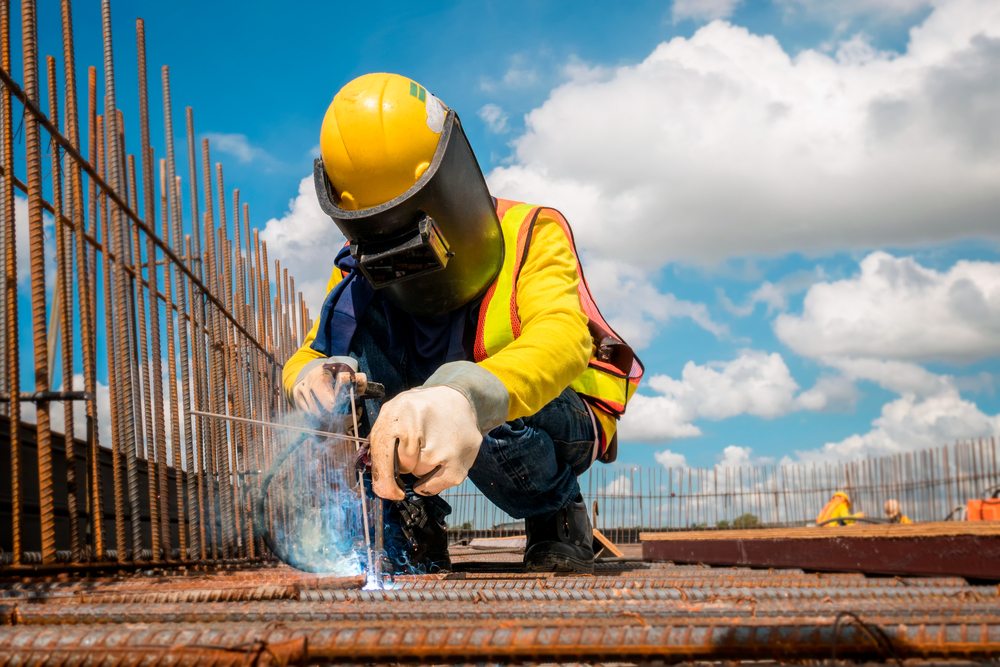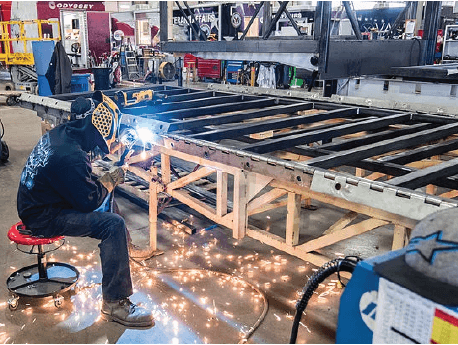Usual Welding Repair Work Issues and Just How to Address Them Successfully
Welding repairs frequently run into a series of issues that can endanger the stability of the end product. Common troubles consist of poor infiltration, porosity, and misalignment, to name a few. Each problem offers one-of-a-kind obstacles that need particular strategies for resolution. Recognizing these problems is essential for welders aiming to enhance their skills and results. This discussion will certainly check out these common welding repair service problems and efficient approaches to resolve them.
Poor Infiltration
Insufficient infiltration takes place when the weld metal falls short to completely fuse with the base material, leading to weak joints and possible architectural failings. This issue usually stems from inadequate warmth input, incorrect electrode angle, or improper welding rate. Welders might come across insufficient infiltration due to a mistake of the necessary specifications for a particular product density or type. Additionally, contamination on the base material's surface area can prevent effective bonding, worsening the problem. To deal with inadequate infiltration, welders should assure proper settings on their tools and keep a tidy work surface area. Normal inspection of welds is advised to recognize any kind of deficiencies early, enabling timely corrections and the avoidance of jeopardized architectural integrity in bonded settings up.
Porosity
Porosity is a typical flaw in welded joints that manifests as tiny gas bubbles trapped within the weld steel. This flaw can jeopardize the honesty of the weld, bring about reduced stamina and potential failing under stress and anxiety. Belgrade. Porosity normally arises from contamination, wetness, or improper welding techniques, which enable gases to escape into the molten weld swimming pool. To resolve porosity, welders must guarantee proper surface prep work, keep a tidy workplace, and use appropriate welding criteria. Additionally, choosing the appropriate filler material and shielding gas can alleviate gas entrapment. Normal inspection and screening of welds can aid recognize porosity early, guaranteeing timely restorative activities are taken, thereby protecting the high quality and reliability of the welded framework
Misalignment
Misalignment in welding can emerge from various factors, consisting of incorrect setup and thermal growth. Comprehending the origin is essential for reliable resolution. A number of correction techniques are offered to realign elements and guarantee architectural integrity.
Sources of Misalignment
Welding misalignment commonly stems from a range of underlying issues that can compromise structural integrity. One main cause is improper fit-up of parts before welding, which can lead to gaps and unequal surfaces. Variations in thermal expansion during the welding procedure can likewise cause distortion, specifically if the materials being joined have various coefficients of expansion. Furthermore, poor securing and fixturing may stop working to hold components securely in position, causing activity during welding. Badly conserved devices, consisting of welding equipments and devices, may present variances in the weld bead, more adding to misalignment. Ultimately, operator mistake, originating from inadequate training or experience, can additionally play a considerable role in creating misaligned welds.
Modification Methods Offered
Resolving misalignment effectively requires a combination of rehabilitative strategies customized to the specific problems at hand. One usual approach is making use of fixtures or jigs to hold components in the appropriate placement during welding, making sure regular placement. Additionally, pre-heating the products can aid reduce distortion and improve fit-up. For significant imbalance, mechanical adjustment methods, such as utilizing hydraulic jacks or clamps, can be used to fix the position before welding. Post-weld warm treatment may likewise be required to soothe tensions triggered by imbalance. Cautious inspection and modification during the setup phase can prevent misalignment problems from becoming substantial issues, promoting a smoother welding procedure and boosting general architectural integrity.
Distortion
Distortion is an usual obstacle in welding that can occur from numerous factors, including unequal heating and air conditioning. Understanding the sources of distortion is vital for implementing efficient prevention strategies. Addressing this issue not just improves architectural integrity however likewise boosts the general quality of the weld.
Reasons of Distortion
When subjected to the extreme warm of welding, materials frequently undergo changes that can bring about distortion. This sensation mainly develops from thermal expansion and tightening throughout the welding procedure. As the weld location warms up, the product broadens; upon cooling, it gets, which can create internal stresses. On top of that, irregular heating throughout a workpiece can intensify these stresses, resulting in warping or bending. The sort of product additionally plays a considerable function; steels with differing thermal conductivity and coefficients of development may respond in different ways, leading to unforeseeable distortions. Additionally, poor joint style and inadequate fixturing can contribute to imbalance throughout welding, increasing the probability of distortion. Comprehending these causes is essential for effective welding fixing and prevention strategies.
Prevention Techniques
Efficient prevention strategies for distortion throughout welding concentrate on controlling warm input and ensuring appropriate joint layout. Preserving a regular heat input assists to reduce thermal growth and tightening, which can cause distortion. Using techniques such as preheating the work surface can likewise lower the temperature gradient, promoting consistent heating. In addition, selecting suitable joint layouts, such as T-joints or lap joints, can enhance security and decrease tension focus. Implementing correct fixturing to secure the workpieces in position additionally aids in preserving alignment during the welding procedure. Ultimately, staggered welding series can disperse heat a lot more uniformly, protecting against localized distortion. By applying these methods, welders can significantly lower the likelihood of distortion and enhance the general high quality of their welds.
Splitting
Fracturing is an usual issue run into in welding fixings, commonly resulting from numerous elements such as improper cooling prices, product choice, or inadequate joint preparation. The incident of cracks can significantly endanger the stability of the weld, resulting in possible failings throughout operation. To resolve this concern, welders have to initially assess the root causes, ensuring that materials work and suitably selected for the certain application. In addition, managing the air conditioning price during the welding process is important; rapid air conditioning can induce stress and anxiety and lead to breaking. Proper joint style and preparation also add to lessening the risk. Implementing these approaches can boost weld high quality and resilience, eventually minimizing the probability of splitting in finished weldments.

Insufficient Fusion
A considerable concern in welding fixings is incomplete combination, which occurs when the weld steel does not adequately bond with the base product or previous weld passes - Montana Mobile Welding and Repair Belgrade Fabrication. This problem can cause weak points in the joint, potentially endangering the integrity of the welded structure. Factors adding to incomplete combination include not enough heat input, improper welding strategy, and contamination of the surfaces being joined. To address this problem successfully, welders must assure correct pre-weld cleansing and surface area preparation, as well as readjust their welding specifications to accomplish sufficient penetration and combination. Normal evaluation throughout the welding procedure can likewise aid determine incomplete fusion early, permitting timely restorative measures to enhance the total top quality of the weld
Overheating
While welding repairs can improve architectural stability, more info overheating presents a significant challenge that can lead to material degradation. Too much warmth during welding can modify the mechanical residential or commercial properties of metals, causing decreased strength, increased brittleness, and warping. This sensation is particularly crucial in high-stress applications where architectural reliability is paramount. Recognizing overheating can include aesthetic examinations for staining or distortion, along with checking temperature level throughout the welding procedure. To minimize the threats related to overheating, welders ought to employ proper methods, such as controlling warm input, adjusting traveling rate, and making use of suitable filler materials. In addition, carrying out pre- and post-weld warm treatments can assist bring back material homes and boost the overall high quality of the repair, guaranteeing long-term efficiency and safety.
Regularly Asked Inquiries
What Are the Usual Indications of a Welding Defect?

How Can I Examine My Welds for Quality?
To test welds for high quality, one can utilize visual assessments, ultrasonic testing, and radiographic techniques. Each method ensures structural integrity, identifies flaws, and verifies adherence to specified standards, inevitably improving the dependability of the welded joints.
What Security Preventative Measures Should I Take While Welding?
When welding, one should prioritize safety and security by using proper personal protective equipment, guaranteeing proper ventilation, safeguarding flammable products away, maintaining a clean work space, and knowing environments to protect against accidents and injuries.
Can I Repair a Weld Without Remodeling the Entire Joint?
Repairing a weld without renovating the whole joint is possible, depending on the damage (Montana Mobile Welding and Repair Fabrication). Methods such as grinding, including filler material, or using a welding procedure can successfully attend to particular flaws while maintaining the bordering structure
What Equipment Are Essential for Reliable Welding Services?
Important devices for reliable welding fixings include a welding equipment, wire brush, grinder, protective gear, clamps, and filler products. Each tool plays an important role in making certain quality and security during the repair work process. Porosity typically develops from contamination, moisture, or inappropriate welding strategies, which allow gases to run away into the molten weld pool. Badly kept equipment, including welding makers and tools, may present variances in the weld grain, additional adding to imbalance. When subjected to the intense warm of welding, materials usually go through changes that can lead to distortion. Breaking is a common problem encountered in welding repairs, frequently resulting from various factors such as inappropriate cooling rates, material selection, or poor joint preparation. A significant concern in welding repair services is incomplete blend, which takes place when the weld metal does not appropriately bond with the base material or previous weld passes.